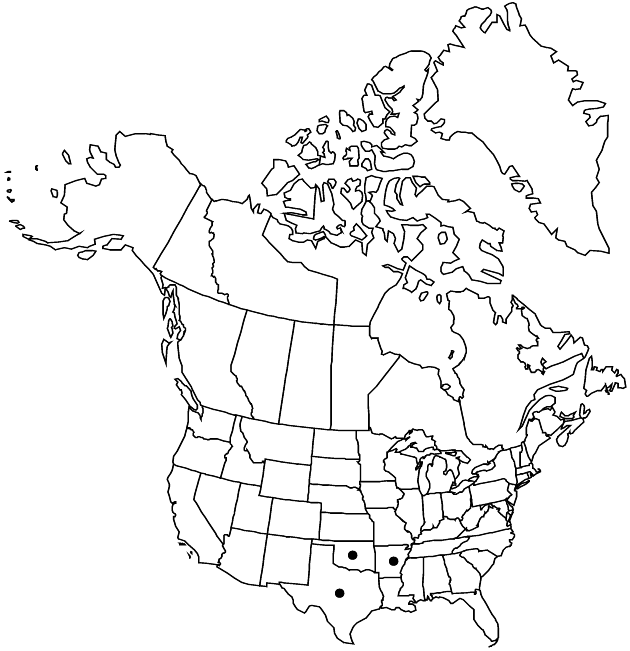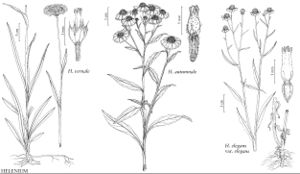Difference between revisions of "Helenium elegans var. elegans"
Treatment appears in FNA Volume 21. Treatment on page 433.
imported>Volume Importer |
imported>Volume Importer |
||
| Line 41: | Line 41: | ||
|publication year= | |publication year= | ||
|special status= | |special status= | ||
| − | |source xml=https:// | + | |source xml=https://bitbucket.org/aafc-mbb/fna-data-curation/src/2e0870ddd59836b60bcf96646a41e87ea5a5943a/coarse_grained_fna_xml/V19-20-21/V21_1084.xml |
|tribe=Asteraceae tribe Heliantheae | |tribe=Asteraceae tribe Heliantheae | ||
|subtribe=Asteraceae (tribe Heliantheae) subtribe Gaillardiinae | |subtribe=Asteraceae (tribe Heliantheae) subtribe Gaillardiinae | ||
Latest revision as of 20:08, 5 November 2020
Plants (20–)30–100(–120) cm. Leaves: proximal blades usually entire, rarely serrate; mid and distal leaves entire. Heads 20–100(–200+). Peduncles 2–5(–7) cm. Involucres 5–8 × 5–8 mm. Ray florets 10–14; corollas 5.5–11.5 × 2.7–5.2 mm. Disc florets 150–300(–500+). Cypselae 0.6–0.9 mm; pappi 0.05–0.2 mm. 2n = 26.
Phenology: Flowering (May–)Jun–Aug (sometimes again in fall).
Habitat: Calcareous soils, ditches, washes, along streams
Elevation: 100–600 m
Distribution

Ark., Okla., Tex.
Discussion
Selected References
None.
Lower Taxa
None.
